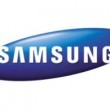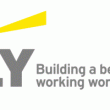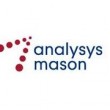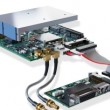

We’re all aware of the benefits of IoT, and how it is set to make tasks quicker and easier. But these intuitively connected cars, fridges and utility devices haven’t really gone mainstream yet, and they won’t until an Internet of Things (IoT) standard is introduced. (more…)
December 30, 2016
Posted by: Avadhoot Patil

Samsung Electronics Co., Ltd. announced the latest in its innovative and popular line of POWERbotTM vacuum cleaners, the VR7000. (more…)
December 29, 2016
Posted by: Avadhoot Patil

Only 19% of households are likely to purchase or use connected home technology over the next five years, according to an EY survey of 2,500 households in the UK. However, further analysis by EY shows that despite this discrepancy, there are a number of opportunities ripe for organisations looking to capitalise on the smart home revolution. (more…)
Posted by: Avadhoot Patil

Andrew Lee, head of Market Intelligence and Analysis at Octo Telematics looks at the ADAS systems currently being installed in today’s cars and says they are the first steps towards the driverless car of tomorrow. (more…)
Posted by: Avadhoot Patil

2016 has been a busy year for telecoms operators in the Internet of Things (IoT) market, most notably in low-power, wide-area (LPWA) technologies as narrowband IoT (NB-IoT) and LTE-M (long-term evolution to 4G, machine to machine) approach full commercial deployment. (more…)
December 28, 2016
Posted by: Avadhoot Patil

ADL Embedded Solutions Inc., a provider of embedded solutions, has announced its ADLVIS-1660 CoaXPress PCIe/104 solution. (more…)
December 26, 2016
Posted by: Avadhoot Patil

Craig Smith, Transportation research lead, Rapid7
We will see malware used to shut-down a major transportation sector. I anticipate that the malware will be intentionally targeted to halt a transportation sector either for the purpose of ransomware, or political gain. (more…)
Posted by: Avadhoot Patil
u-blox, a global provider of wireless and positioning modules and chips, reports that two of its products have been used by Cobilsys to create South Korea’s smallest battery-powered asset tracking device. (more…)
December 23, 2016
Posted by: Avadhoot Patil

Berg Insight, an M2M/IoT market research provider, released a new market report covering the connected vending machine market. The global installed base of connected vending machines reached an estimated 1.51 million units in 2015. (more…)
Posted by: Avadhoot Patil

According to a new research report from the Gothenburg, Sweden-based analyst firm, Berg Insight, mobile operator revenues from the Internet of Things (IoT) reached € 11 billion(US$ 11.42 billion) in 2016. (more…)
Posted by: Avadhoot Patil